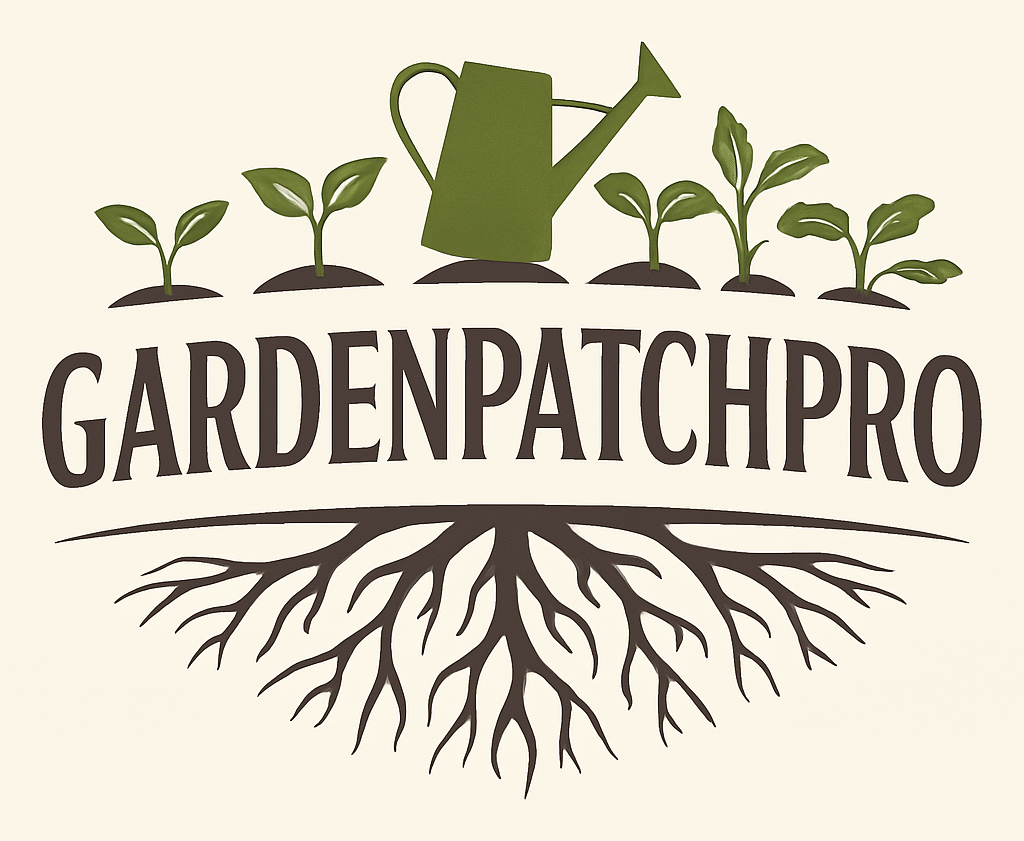14 Lawn Edging Ideas to Enhance Your Garden’s Design and Functionality
Lawn edging is an important part of landscaping that helps define garden beds and create clean, organized outdoor spaces. It adds a finishing touch that can make any yard look more polished and well-maintained.
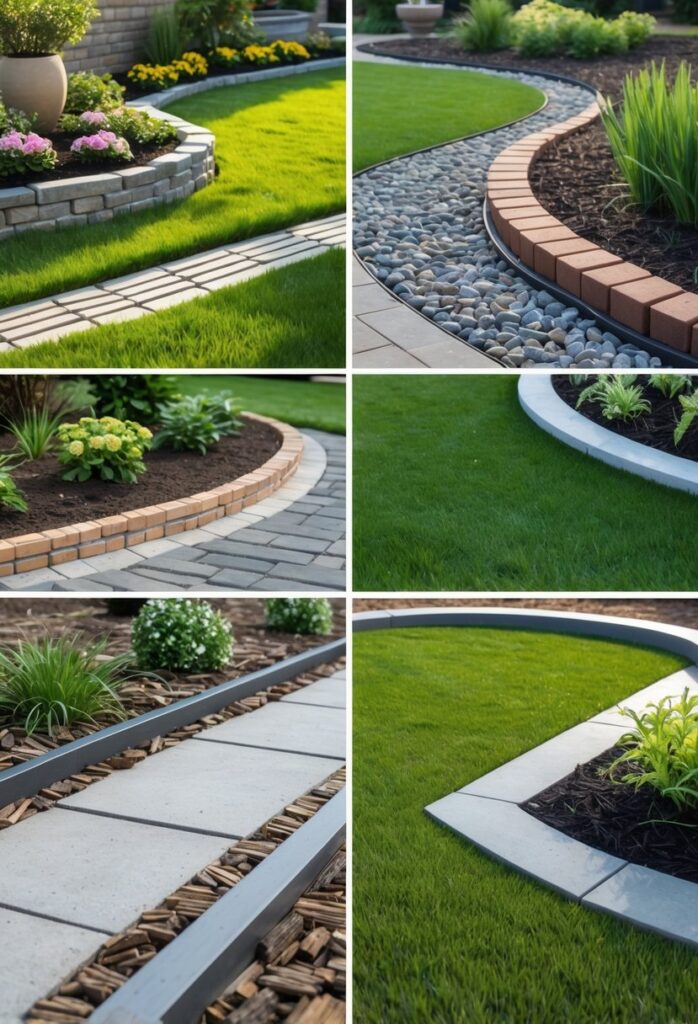
Choosing the right lawn edging can improve the look of the yard while also helping to keep grass and plants in their proper places. With many options available, there are ideas suited for different styles and budgets to enhance any garden or lawn.
1) Brick garden edging for a classic look
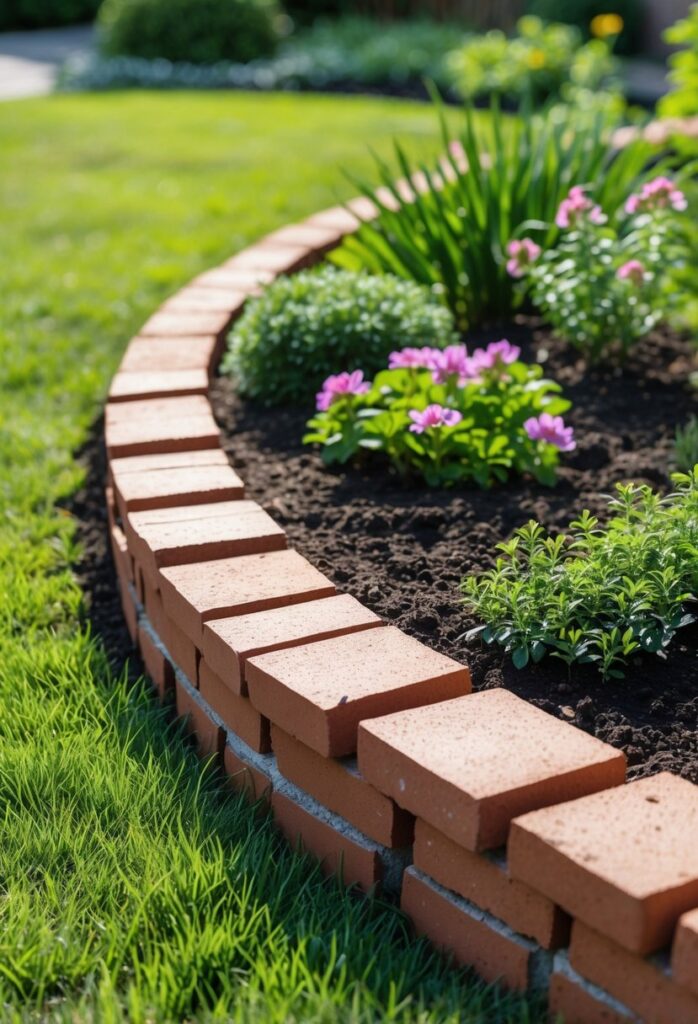
Brick garden edging is a simple way to add a neat, timeless border to any lawn or garden bed. It creates clear separation between grass and planting areas, helping to keep the garden organized.
This type of edging works well with both straight lines and gentle curves. The bricks can be laid in different patterns to fit the style of the outdoor space.
Bricks are durable and low-maintenance. They resist weather and wear, which means the edging will last for years without much care.
Using brick edging gives the garden a polished appearance. It pairs well with a variety of plants and can suit both traditional and modern garden styles.
For those wanting an easy but effective solution, brick edging offers both function and style. It is a popular choice for defining pathways, flower beds, and lawn borders.
More ideas and details on using bricks for garden borders can be found at 27 stunning brick garden edging ideas for a polished look.
2) Steel lawn edging strips for modern appeal
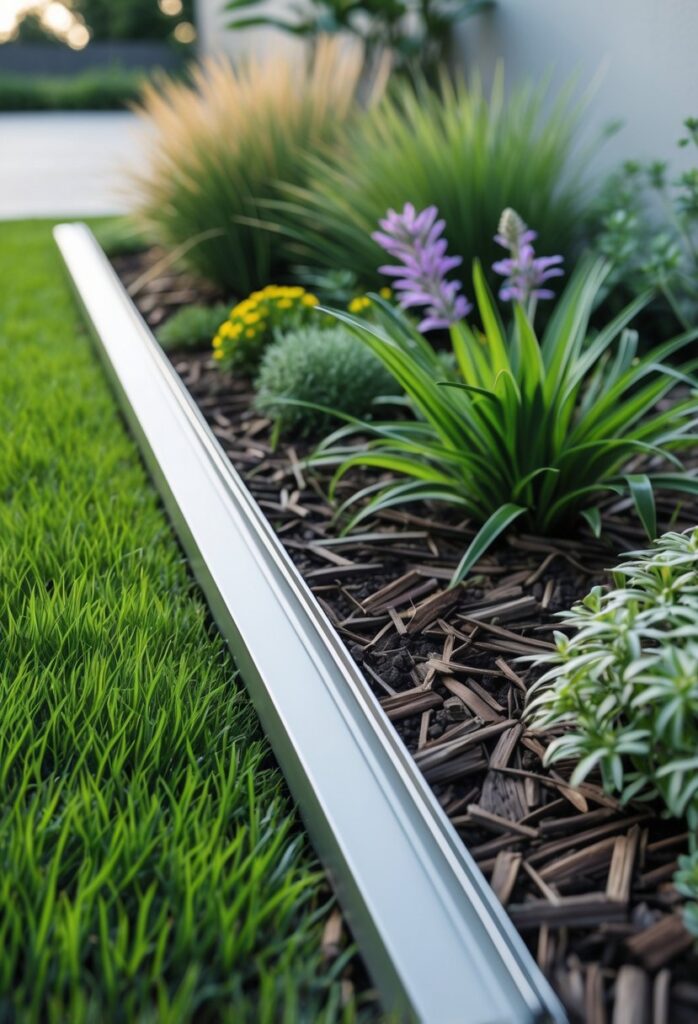
Steel lawn edging strips create clean, sharp lines that add a modern look to any garden. They sit flush with the ground, defining spaces without drawing too much attention. This makes them ideal for those who want a sleek and simple border.
The material is durable and weather-resistant. Galvanized steel or powder-coated finishes help prevent rust, ensuring the edging lasts for years. It also stays straight and strong against lawn equipment and weather changes.
Steel strips work well to keep grass from spreading into flower beds or pathways. They offer a neat separation that reduces maintenance and keeps the garden looking tidy. Many homeowners prefer this edging for its minimal style and long-lasting nature.
These strips can be bent or shaped to fit curved or straight edges. Installation is often easy with stakes or connectors that hold the metal firm in place. The clean, industrial design fits well with both traditional and contemporary garden styles.
For more details on steel edging options, see modern metal landscape edging ideas.
3) Natural stone border for rustic charm
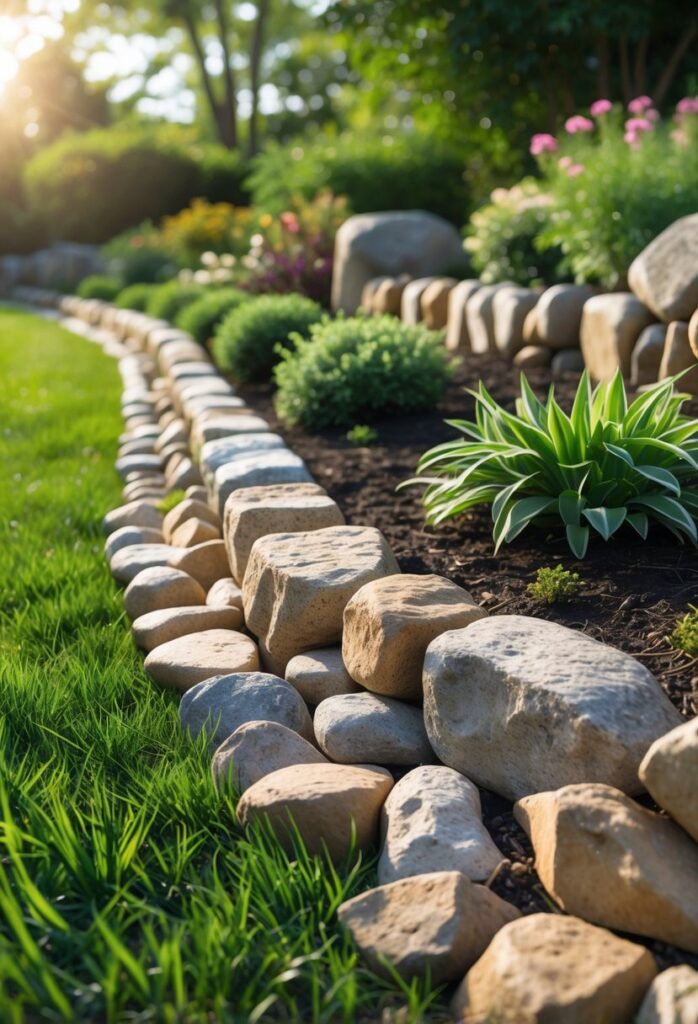
A natural stone border gives a lawn a simple, rustic look. It uses stones like fieldstone or river rock that blend well with outdoor spaces. These stones create a border that feels natural and sturdy.
The uneven shapes and textures of natural stones add visual interest. They can outline flower beds, pathways, or garden edges with an organic style. This type of edging also helps keep soil and mulch in place.
Natural stone borders are low maintenance. They resist weather and wear better than some materials. Plus, reclaimed or recycled stones can add a unique story and support eco-friendly gardening.
Many homeowners appreciate how natural stone edging ties together plants and lawn. It enhances the garden’s character without looking artificial. For more ideas about rustic garden borders with stone, refer to natural stone edging examples and tips.
You can find inspiration from various natural stone types and arrangements suitable for different yard designs. For details on styles and practical advice, visit natural stone border ideas for rustic charm.
4) Gravel edging to enhance drainage

Gravel edging is a practical choice for lawn borders that need good drainage. It allows water to pass through easily, reducing the risk of puddles or flooding near your lawn.
This type of edging helps direct water away from your grass and garden beds. It can prevent soil erosion and keep the lawn healthy by avoiding water buildup.
Gravel is also simple to install along slopes or uneven ground. It adapts well to different shapes and sizes, making it versatile for many garden designs.
Using gravel edging can complement other drainage solutions like drain channels or base stabilizer grids. Together, they create a stable and well-drained lawn edge that requires less maintenance.
For ideas on gravel edging and drainage, see 21+ Smart Gravel Driveway Drainage Ideas.
5) Wooden sleeper edging for warmth
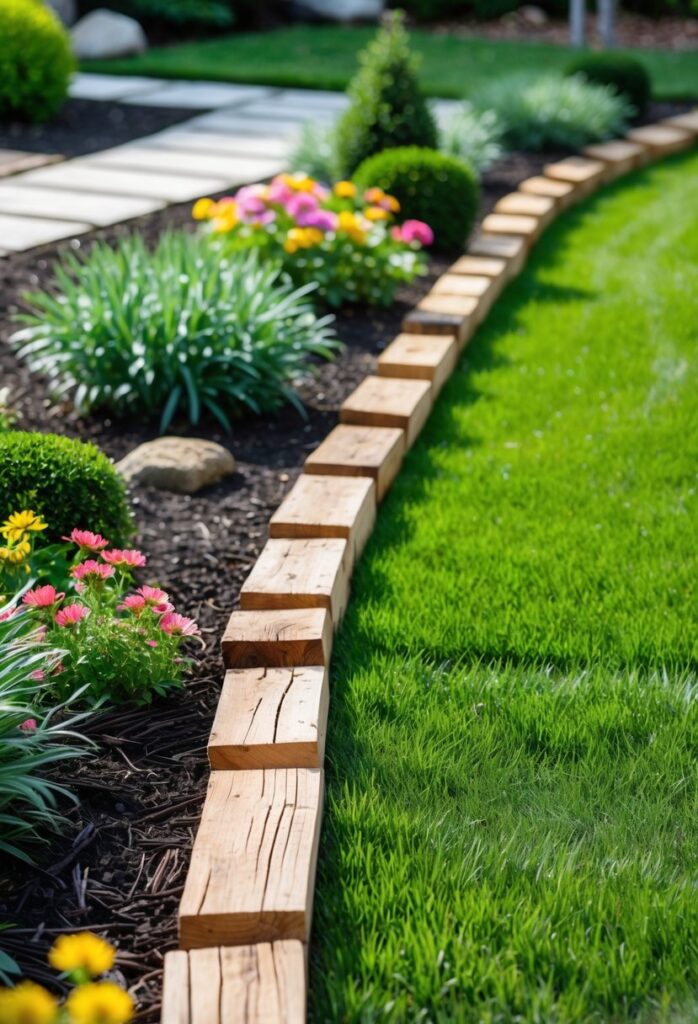
Wooden sleepers create a warm and natural look in any garden. They bring a rustic charm that fits well with plants and natural landscapes.
Sleepers are thick, sturdy pieces of wood. They work well to keep soil in place and clearly define garden beds or pathways.
Weathered sleepers add texture and character. Their earthy tones blend naturally with flowers and greenery, creating a cozy feel.
This type of edging also lasts long if properly treated with wood stain. The stain helps protect the wood from moisture and sun damage.
Using sleepers for edging is practical and stylish. They suit both modern and traditional garden designs and are easy to install.
For ideas on how to use sleepers effectively in a garden, one can explore creative examples of garden borders with sleepers.
6) Plastic flexible edging for curves
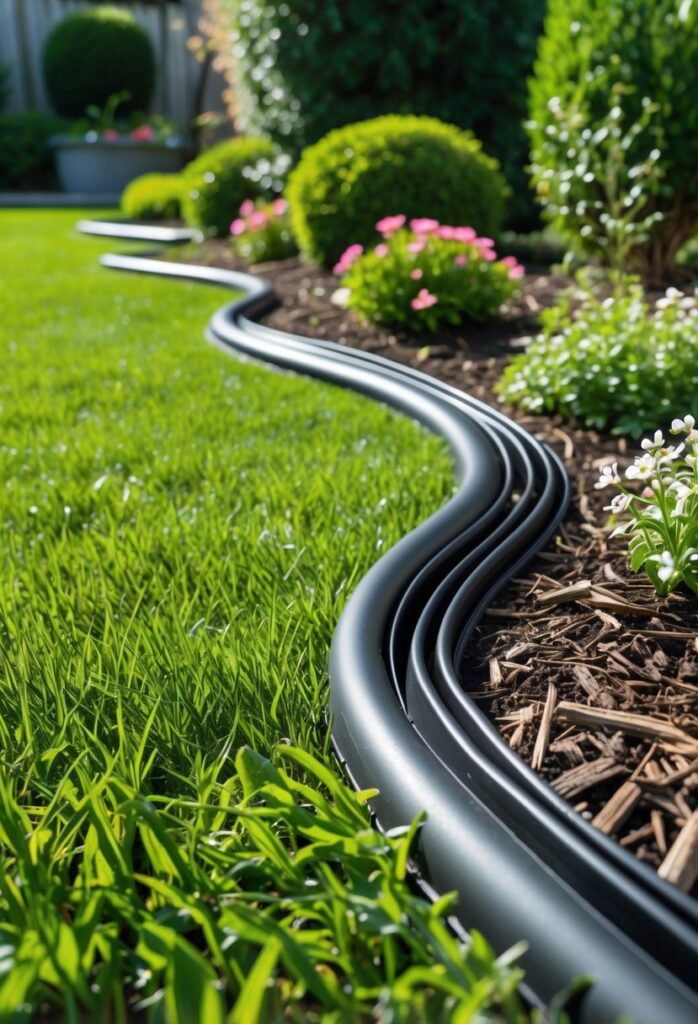
Plastic flexible edging is a popular choice for shaping curved lawn borders. It bends easily, allowing it to follow smooth or tight curves without breaking. This flexibility helps create neat, flowing edges that fit any garden design.
The material is lightweight and easy to install. It usually comes with matching stakes that hold it firmly in place. This prevents shifting over time and keeps the border looking clean.
Plastic edging is also weather-resistant. It holds up well against rain, sun, and temperature changes. However, it is not as strong as metal or concrete, so it might need replacing after several years.
Because it is cost-effective and simple to work with, plastic flexible edging suits both beginners and experienced gardeners. For ideas and tips on how to use this material, check out plastic lawn edging options to create smooth curves.
7) Concrete curb edging for durability
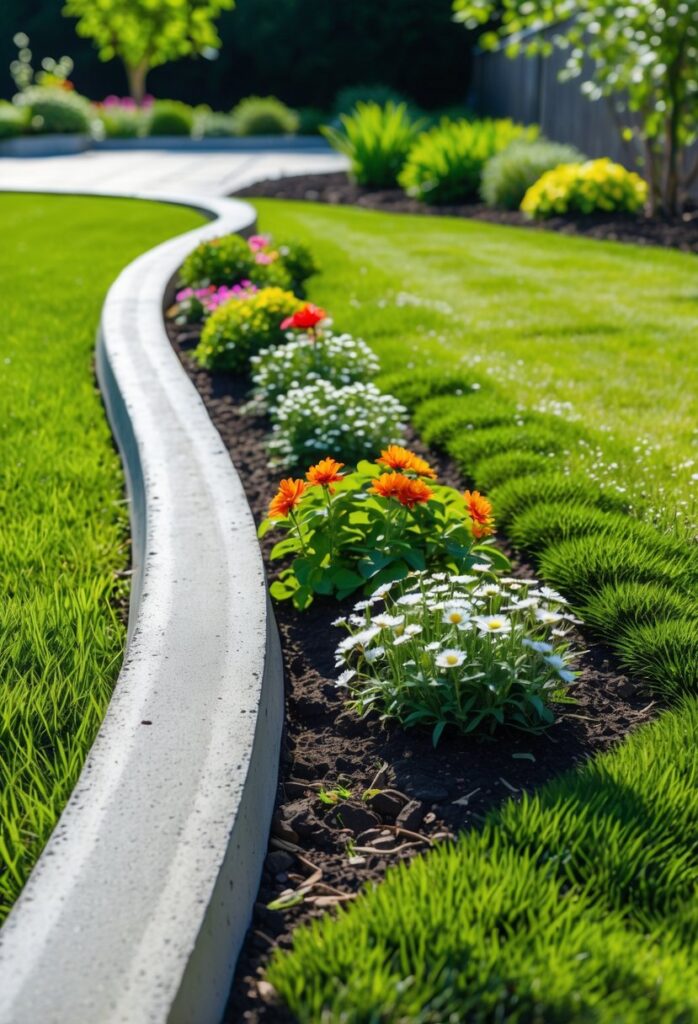
Concrete curb edging is known for its strong and lasting qualities. It can handle different weather conditions without losing shape or strength. This makes it a good option for homeowners wanting a tough and low-maintenance border.
The material can be poured into molds or shaped on site. This allows for smooth, clean lines that define lawn edges clearly. It also helps separate garden beds from grass, giving a neat appearance.
Concrete can be scored or patterned to reduce cracking as the ground shifts. Stamped concrete can imitate brick or stone, offering more style without extra cost. This adds both durability and visual interest to any yard.
Choosing concrete curb edging provides a balance of functionality and curb appeal. Its low upkeep and resilience make it a practical choice for many landscape designs. For more ideas and details, see concrete lawn edging options.
8) Metal lawn edging with powder coating
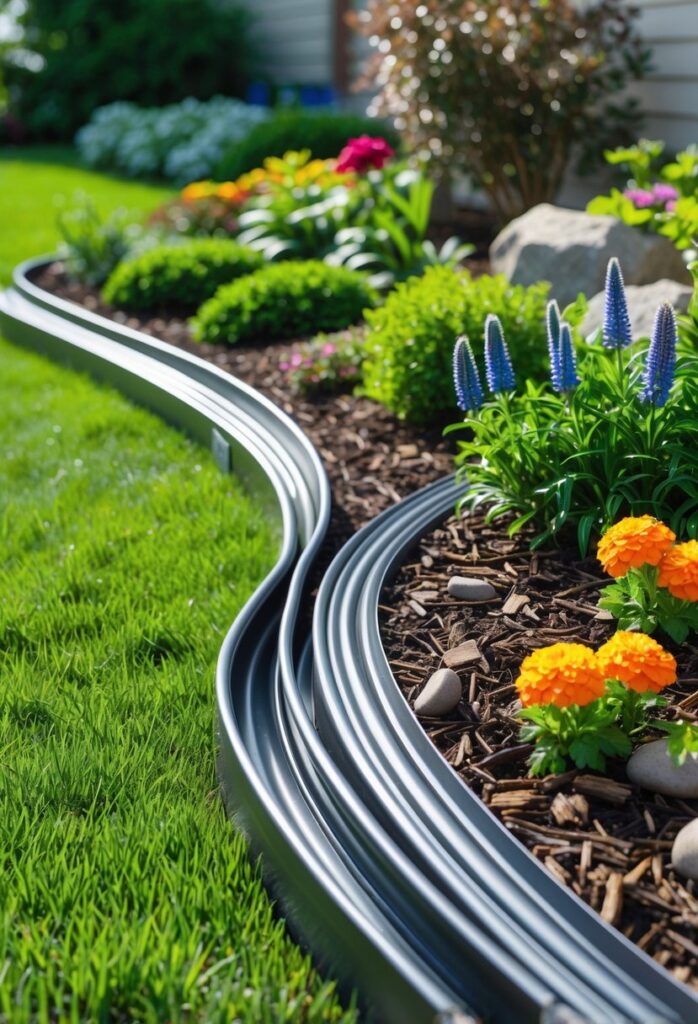
Metal lawn edging with powder coating is a durable choice for defining garden beds and pathways. The powder coating adds a protective layer that helps prevent rust and damage from outdoor elements. This finish lasts longer than regular paint and is less likely to chip or fade over time.
The coating also gives the metal a smooth, uniform look. It often comes in black or other neutral colors that blend well with various landscaping styles. This helps create clean, sharp lines that improve the overall appearance of the yard.
Installation is straightforward, and the strong material can withstand impacts from lawn equipment. It holds up well against string trimmers and foot traffic, maintaining its look for years with minimal maintenance.
Powder-coated metal edging is available in different heights and lengths. This makes it easy to customize the layout to fit specific garden designs or lawn shapes. It delivers both functionality and a neat, professional finish.
For more details on powder-coated steel edging options, see the Colmet steel landscape edging and The J D Russell Company’s steel landscape edging.
9) Recycled rubber edging for eco-friendliness
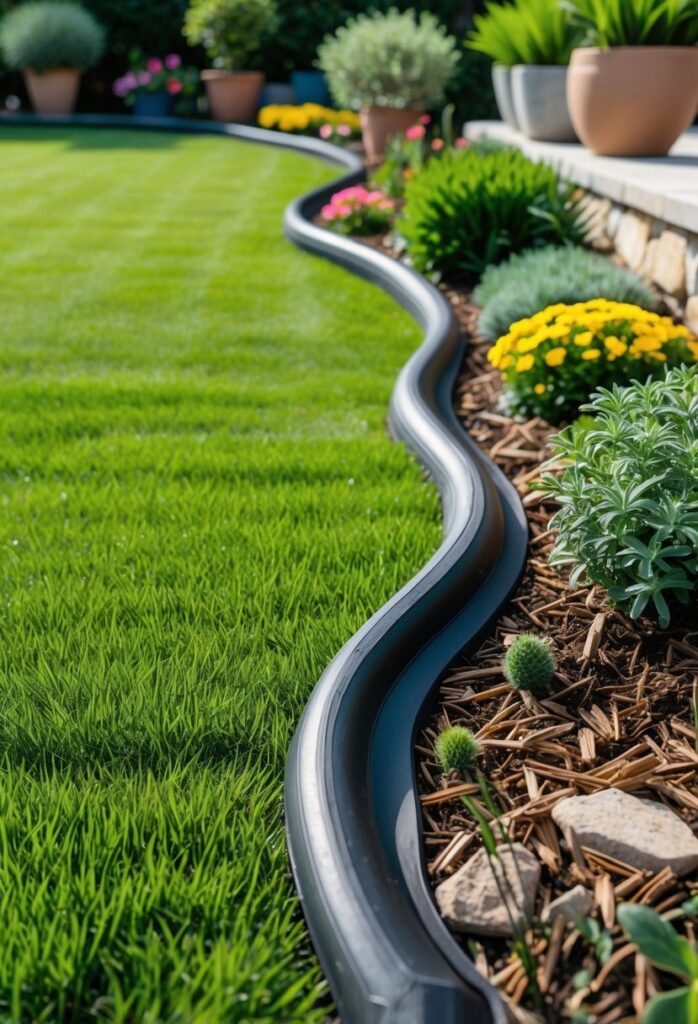
Recycled rubber edging is made from old tires, turning waste into a useful garden product. This type of edging helps reduce landfill waste while providing a durable border for lawns and garden beds.
It is flexible and can bend to fit curves or straight lines. Its design often includes an L-shape that makes installation easy without heavy digging.
Rubber edging is weather-resistant and can last a long time without cracking or breaking. It also stays in place well, helping to keep soil and mulch where they belong.
This option requires little maintenance compared to wood or stone. It resists rotting and is less prone to damage from insects.
Choosing recycled rubber edging supports eco-friendly gardening by reusing materials that would otherwise be discarded. More details on this can be found in the EcoBorder rubber landscape edging review.
10) Pound-in steel edging for easy installation
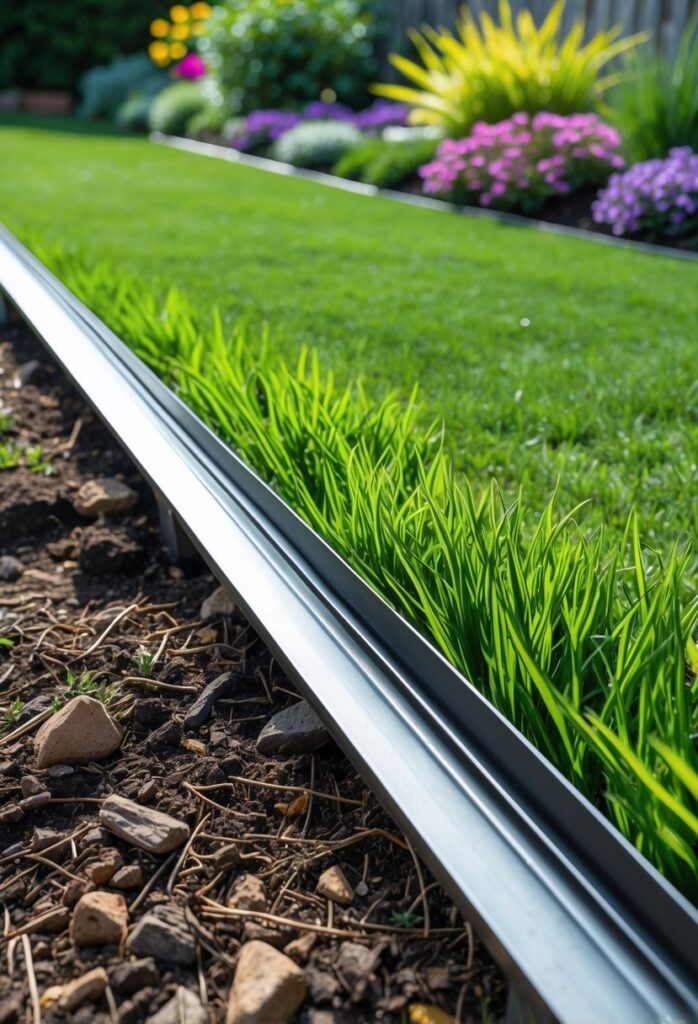
Pound-in steel edging is a simple and reliable option for defining garden beds and pathways. It usually comes in long strips made from durable 14-gauge steel. This type of edging can be hammered directly into the ground, making it quick to install without needing special tools.
The steel is strong enough to hold its shape and resist impacts. It creates clean, sharp lines that help prevent soil and mulch from spilling into unwanted areas. The edging is often galvanized or coated to reduce rust and increase its lifespan.
If the steel edging moves or pops up over time, it can be tapped back firmly into place. This makes maintenance easy and keeps the look neat throughout the seasons. For those who want a straightforward, sturdy border, pound-in steel edging offers both convenience and lasting performance. More details on steel edging options and installation can be found at Colmet Steel Landscape Edging.
11) Living plant edging using boxwoods
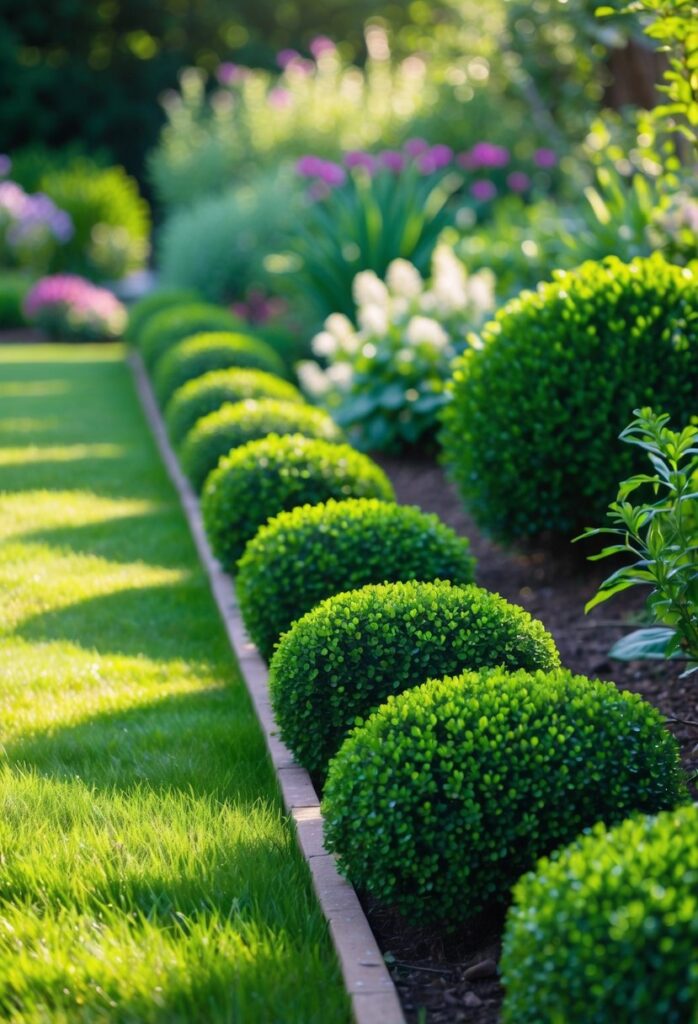
Boxwoods are a popular choice for living plant edging because they stay green year-round. They create a neat, formal border that defines garden beds or pathways clearly. Their dense foliage also adds structure to any lawn or garden space.
These shrubs are hardy and easy to shape. Gardeners can trim boxwoods into low hedges or rounded forms to fit different styles. This makes them versatile for both traditional and modern landscapes.
Boxwoods require moderate care, including regular watering and occasional pruning. They adapt well to many climates, which helps them maintain a fresh look through all seasons. Using boxwoods as edging can increase curb appeal without much effort.
For ideas on how to use these shrubs for garden borders and privacy, see living plant edging using boxwoods examples from various landscaping designs. This method offers both beauty and function in one natural package. More details are available at 39+ beautiful boxwood landscaping ideas.
12) Corten steel for a weathered aesthetic
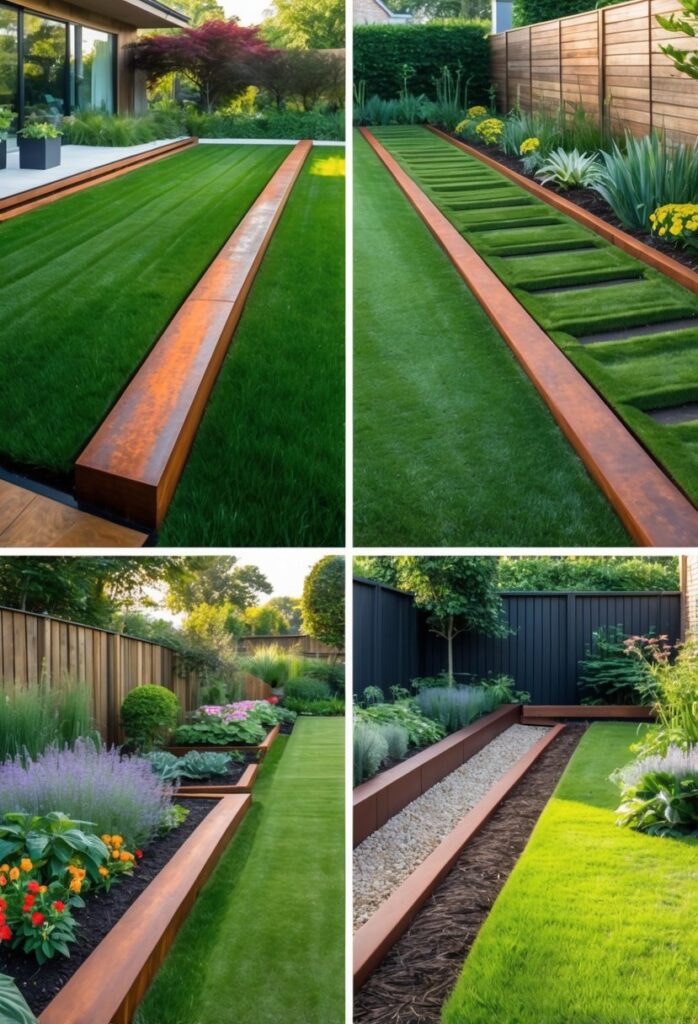
Corten steel is a popular choice for lawn edging because of its natural weathered look. It develops a rusty, orange-brown patina over time. This patina acts as a protective layer, preventing further corrosion.
The material is strong and can last over 25 years with little maintenance. Its warm tones add a rustic charm that fits many garden styles. It works well to define flower beds or separate lawn areas.
Corten steel is easy to install and does not need painting or sealing. It requires minimal upkeep, making it a practical option. As it ages, the color deepens, enhancing the garden’s visual appeal.
More details about using Corten steel for lawn edging can be found at 14 Corten Steel Landscaping Ideas for Gardens.
13) Brick and stone combination borders
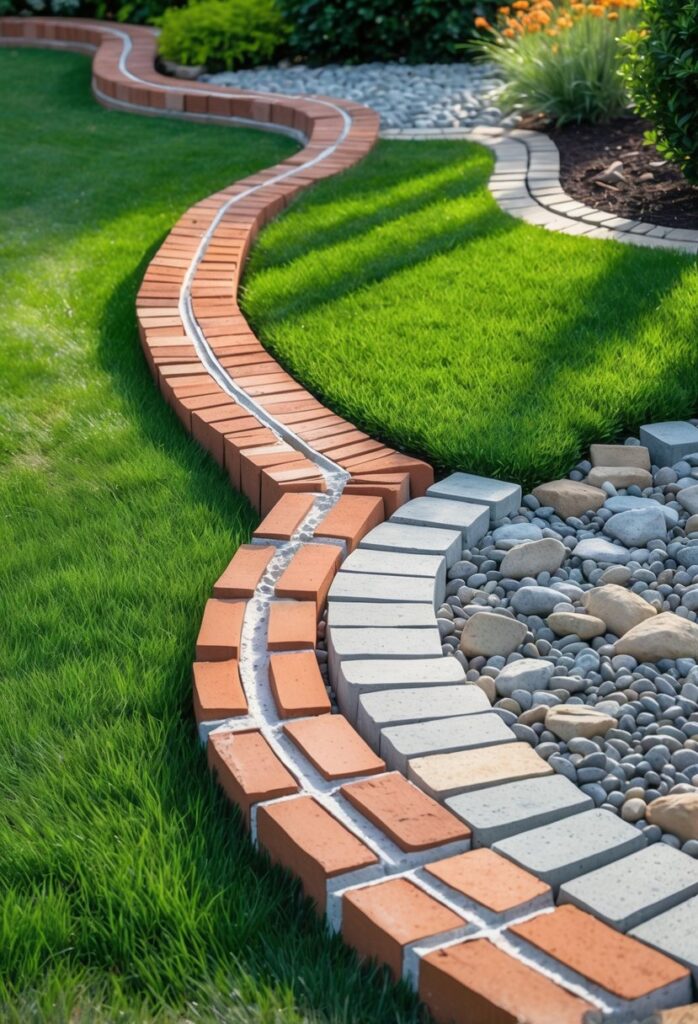
Combining brick and stone creates a strong and attractive lawn edging option. The contrast between smooth bricks and rough stones adds visual interest. It works well to define flower beds or pathways with a natural yet polished look.
This type of border is durable and can handle different weather conditions. Using both materials allows for flexible designs. For example, bricks can form a neat, straight edge, while stones fill in gaps or create curves.
Installation involves setting a solid base to keep the edging stable. Mixing shapes and colors of stones with uniform bricks can enhance the border’s style. This method suits traditional and modern garden designs alike.
The brick and stone combination provides a long-lasting border that requires little upkeep. It also helps keep soil and mulch in place while adding to the garden’s overall charm. For ideas, see brick edging designs with creative patterns and styles.
More inspiration for this style can be found in creative brick edging guides.
14) Low-profile metal edging for subtlety
Low-profile metal edging offers a clean and simple border without drawing too much attention. It sits close to the ground, making it less visible than raised or high edging. This subtle look works well for modern and minimalist garden designs.
It helps keep grass and plants tidy while blending smoothly into the landscape. Low metal edging can separate flower beds, pathways, and lawns without creating a barrier that stands out. It also reduces the risk of tripping.
Durable metals like steel or aluminum are common materials for low-profile edging. These materials resist rust and hold their shape over time. A powder-coated finish can help maintain the edging’s look and protect it from weather.
Low-profile edging offers a neat, understated way to define outdoor spaces. It combines function with a low visual impact, making it popular for those who want neat borders without distraction. To see examples, explore options like those on this low-profile edging page.
Essential Considerations Before Installing Lawn Edging
Proper planning makes lawn edging more effective and longer-lasting. Material choice should suit the local climate to prevent damage over time. Safety and upkeep are also key to keeping the edging looking good and functioning well.
Choosing the Right Materials for Your Climate
Different materials perform better in different weather conditions. For hot, dry climates, metal or stone edging resists cracking and warping. Plastic edging may become brittle under intense sun exposure. In colder, wet climates, flexible rubber or high-quality composite edging can handle freezing and thawing cycles without breaking.
It is important to consider durability against moisture and temperature changes. For example, wood needs treatment to avoid rot in damp areas. Metal edging should be rust-resistant or coated for wet climates. Choosing the proper material reduces maintenance needs and extends the edging’s life.
Safety and Maintenance Tips
Edging should be installed flush with the ground or slightly buried to prevent tripping hazards. Sharp edges or raised ends can cause injuries, so smoothing or capping metal edges is advised.
Regular checks help catch problems early. Cleaning edging prevents dirt buildup and plant overgrowth. Re-securing loose pieces stops shifting that can spoil the border. Using weed barriers beneath edging reduces weed growth and lowers upkeep work.
Proper installation and maintenance keep lawn edging safe and neat over time.
Enhancing Your Landscape With Edging
Edging defines the borders of a lawn or garden, creating a clear line between different areas. It helps keep the outdoor space organized while adding visual interest. Careful choices in edging material and style can improve how a yard looks and feels.
Curb Appeal and Property Value
Good lawn edging improves curb appeal by giving a neat and well-maintained look. Clean, sharp edges make flower beds and lawn areas stand out. This increases the home’s attractiveness to visitors or potential buyers.
Benefits include:
- Defined borders that prevent grass and weeds from spreading
- Cleaner walkways and garden beds
- A polished, professional appearance
Using materials like stone, metal, or composite edging can resist weather and last longer, maintaining value. Well-done edging signals care and can raise property value by making outdoor spaces more appealing and easier to maintain.
Blending Edging With Garden Design
Edging should match the garden’s style and plants for a unified look. Rustic gardens benefit from natural stone or wood, while modern yards work well with metal or concrete borders.
Key points for blending edging effectively:
- Choose colors and materials that complement plants and paths
- Use curved edging to follow natural shapes of flower beds
- Mix textures to create balance between hard and soft elements
Matching edging with garden design keeps the yard cohesive and highlights focal points like trees or flower clusters. Proper blending also helps transition smoothly from lawn to garden, improving flow and overall appearance.
For more ideas, see detailed 14 lawn edging ideas.
Frequently Asked Questions
Lawn edging can be made using different materials and methods depending on style, budget, and maintenance needs. Choosing the right edging helps define the space, controls plant growth, and keeps the garden tidy.
What are some affordable options for DIY lawn edging?
Using free or low-cost materials like bricks, rocks, or recycled bottles can keep costs down. Soil mounds or mulch edges also work well for a no-cost, natural look. Gravel is another cheap choice that improves drainage while framing beds.
How can I create low maintenance garden borders?
Durable materials such as steel edging strips or natural stone reduce upkeep. Selecting low-growing plants around the edging helps prevent frequent trimming. Keeping edges clear from overgrowth minimizes the need for constant care.
What materials are best for long-lasting lawn edging?
Steel lawn edging strips last long and offer a modern clean line. Bricks resist weather and keep their shape well over time. Natural stone also provides durable, rustic charm that requires little repair.
What are effective edging solutions for front yard landscapes?
For a welcoming appearance, brick or wooden sleeper edging adds warmth and classic appeal. Steel edges give a sleek, tidy shape that suits formal designs. Mixing materials can create unique focal points to enhance curb appeal.
How can I design attractive landscape borders on a budget?
Combining natural elements like gravel and reclaimed bricks allows style without high costs. Using wood sleepers or logs adds texture affordably. Simple tools and careful planning help achieve professional results without extra spending.
What are the common pitfalls to avoid when installing lawn edging?
Failing to dig a proper trench or anchor the edging can cause shifting over time. Choosing materials unsuited for the climate may lead to quick damage. Avoid edging that blocks water flow, which can harm plants and lawn health.
More ideas for garden borders and lawn edging can be found at 14 lawn edging ideas to enhance your lawn and landscape.
